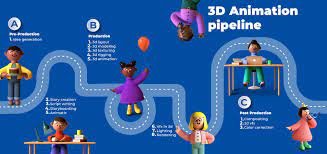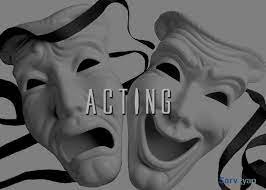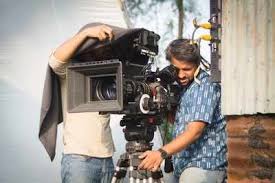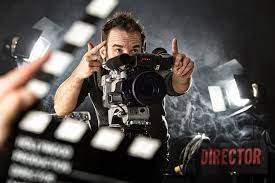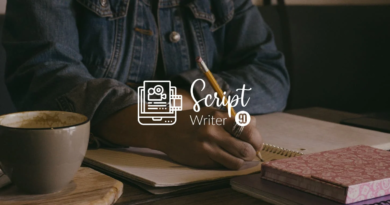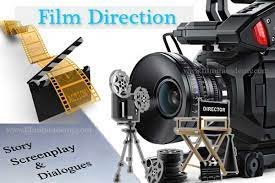What Is Digital Art? Can I Learn Digital Art Online?
Digital art refers to the creation of visual art using digital technologies such as computers, software, and digital drawing tablets. This type of art can be created using a wide range of techniques, including painting, drawing, sculpture, animation, and graphic design. Digital art has become increasingly popular in recent years, as more and more artists are exploring the creative possibilities offered by digital tools.
One of the key features of digital art is the ability to work with a wide range of media. Artists can create digital paintings that look like traditional oil paintings, or they can experiment with abstract forms and colors that are unique to digital media. In addition, digital art allows artists to work with 3D models and animation, creating works that are interactive and dynamic.

Digital art also offers a number of advantages over traditional art forms. For example, digital art can be easily edited and revised, allowing artists to experiment with different techniques and approaches without having to worry about damaging the original work. In addition, digital art can be easily shared and distributed online, allowing artists to reach a wider audience than ever before.
There are many different software programs and tools that artists can use to create digital art. Some of the most popular programs include Adobe Photoshop, Illustrator, and InDesign, as well as 3D modeling programs like Blender and Maya. Digital art can also be created using a wide range of hardware, including digital drawing tablets, graphics tablets, and touchscreens.
One of the most exciting aspects of digital art is the ability to create works that are interactive and dynamic. For example, some digital artists create animated GIFs or videos that react to user input or changes in the environment. Others create works that use sensors or other technologies to create immersive experiences that respond to the viewer’s movements and actions.
Another key feature of digital art is the ability to collaborate and share works online. Many digital artists participate in online communities and forums, sharing their works and receiving feedback from other artists and fans. This type of collaboration can lead to the creation of new and innovative works, as artists share ideas and techniques and work together to push the boundaries of digital art.
Despite its many advantages, digital art has also faced some criticism from traditional artists and critics. Some argue that digital art lacks the physicality and tactile qualities of traditional art forms, and that it can be too reliant on technology and software. Others argue that digital art can be too easy to create, and that it can lead to a proliferation of derivative and unoriginal works.
Despite these criticisms, digital art continues to grow in popularity and influence, as more and more artists explore the creative possibilities of digital tools and technologies. Whether you are a seasoned digital artist or just starting out, there has never been a better time to explore the exciting and dynamic world of digital art.
Can I Learn Digital Art Online?
Yes, you can absolutely learn digital art online. In fact, there are many online resources available that can help you learn digital art, from beginner-level tutorials to advanced courses and workshops. In this article, we will explore some of the best online resources for learning digital art, and provide tips and advice to help you get started.

Getting Started with Digital Art
Before we dive into specific resources and courses, it’s important to understand some of the basics of digital art. At its core, digital art is about using digital tools and technologies to create visual art. This can include everything from digital painting and drawing, to 3D modeling and animation, to graphic design and more.
One of the first steps to learning digital art is to acquire the necessary tools and equipment. This will typically include a computer or tablet, as well as digital art software and a digital drawing tablet or graphics tablet. Some popular digital art software programs include Adobe Photoshop, Illustrator, and InDesign, as well as 3D modeling programs like Blender and Maya.
Once you have the necessary tools and equipment, it’s important to start practicing and experimenting with different techniques and approaches. This can involve following tutorials and step-by-step guides, as well as working on your own projects and experimenting with different tools and techniques.
Best Online Resources for Learning Digital Art
- YouTube Tutorials and Channels
YouTube is one of the best resources for learning digital art online, with a wealth of tutorials and channels dedicated to everything from digital painting and drawing to 3D modeling and animation. Some popular digital art channels on YouTube include Proko, Ctrl+Paint, and Aaron Rutten, as well as channels dedicated to specific software programs like Blender Guru and Adobe Creative Cloud.

- Online Courses and Workshops
Another great way to learn digital art online is through online courses and workshops. There are many websites and platforms that offer digital art courses, including Udemy, Skillshare, and Coursera. These courses can range from beginner-level introductions to specific software programs, to more advanced courses on digital painting, 3D modeling, and animation.
- Online Communities and Forums
Online communities and forums can be a great resource for learning digital art, as they allow you to connect with other artists and enthusiasts and share your work and ideas. Some popular digital art communities and forums include DeviantArt, ArtStation, and CGSociety.
- Digital Art Blogs and Websites
There are also many digital art blogs and websites that offer tutorials, tips, and resources for learning digital art. Some popular digital art blogs and websites include Creative Bloq, Concept Art Empire, and Digital Arts Online.
Tips and Advice for Learning Digital Art Online
- Start with the Basics
If you are new to digital art, it’s important to start with the basics and build a strong foundation of skills and techniques. This may involve following tutorials and step-by-step guides, as well as practicing and experimenting with different tools and approaches.
- Practice Consistently
Consistent practice is key to improving your digital art skills, so try to set aside time each day or each week to work on your art. This may involve setting goals and deadlines for yourself, as well as seeking feedback and critiques from other artists and enthusiasts.

- Experiment and Try New Things
Digital art is all about experimentation and creativity, so don’t be afraid to try new things and push the boundaries of what is possible. This may involve experimenting with different tools and techniques, as well as exploring new styles and genres of digital art.
- Connect with Other Artists
Connecting with other artists and enthusiasts can be a great way to learn digital art and get feedback on your work. This may involve joining online communities and forums, attending workshops and events, or collaborating with other artists on projects.
Digital art refers to the creation of visual art using digital technologies such as computers, software, and digital drawing tablets. This type of art can be created using a wide range of techniques, including painting, drawing, sculpture, animation, and graphic design. Digital art has become increasingly popular in recent years, as more and more artists are exploring the creative possibilities offered by digital tools.
One of the key features of digital art is the ability to work with a wide range of media. Artists can create digital paintings that look like traditional oil paintings, or they can experiment with abstract forms and colors that are unique to digital media. In addition, digital art allows artists to work with 3D models and animation, creating works that are interactive and dynamic.

Digital art also offers a number of advantages over traditional art forms. For example, digital art can be easily edited and revised, allowing artists to experiment with different techniques and approaches without having to worry about damaging the original work. In addition, digital art can be easily shared and distributed online, allowing artists to reach a wider audience than ever before.
There are many different software programs and tools that artists can use to create digital art. Some of the most popular programs include Adobe Photoshop, Illustrator, and InDesign, as well as 3D modeling programs like Blender and Maya. Digital art can also be created using a wide range of hardware, including digital drawing tablets, graphics tablets, and touchscreens.
One of the most exciting aspects of digital art is the ability to create works that are interactive and dynamic. For example, some digital artists create animated GIFs or videos that react to user input or changes in the environment. Others create works that use sensors or other technologies to create immersive experiences that respond to the viewer’s movements and actions.
Another key feature of digital art is the ability to collaborate and share works online. Many digital artists participate in online communities and forums, sharing their works and receiving feedback from other artists and fans. This type of collaboration can lead to the creation of new and innovative works, as artists share ideas and techniques and work together to push the boundaries of digital art.
Despite its many advantages, digital art has also faced some criticism from traditional artists and critics. Some argue that digital art lacks the physicality and tactile qualities of traditional art forms, and that it can be too reliant on technology and software. Others argue that digital art can be too easy to create, and that it can lead to a proliferation of derivative and unoriginal works.
Despite these criticisms, digital art continues to grow in popularity and influence, as more and more artists explore the creative possibilities of digital tools and technologies. Whether you are a seasoned digital artist or just starting out, there has never been a better time to explore the exciting and dynamic world of digital art.
Can I Learn Digital Art Online?
Yes, you can absolutely learn digital art online. In fact, there are many online resources available that can help you learn digital art, from beginner-level tutorials to advanced courses and workshops. In this article, we will explore some of the best online resources for learning digital art, and provide tips and advice to help you get started.

Getting Started with Digital Art
Before we dive into specific resources and courses, it’s important to understand some of the basics of digital art. At its core, digital art is about using digital tools and technologies to create visual art. This can include everything from digital painting and drawing, to 3D modeling and animation, to graphic design and more.
One of the first steps to learning digital art is to acquire the necessary tools and equipment. This will typically include a computer or tablet, as well as digital art software and a digital drawing tablet or graphics tablet. Some popular digital art software programs include Adobe Photoshop, Illustrator, and InDesign, as well as 3D modeling programs like Blender and Maya.
Once you have the necessary tools and equipment, it’s important to start practicing and experimenting with different techniques and approaches. This can involve following tutorials and step-by-step guides, as well as working on your own projects and experimenting with different tools and techniques.
Best Online Resources for Learning Digital Art
- YouTube Tutorials and Channels
YouTube is one of the best resources for learning digital art online, with a wealth of tutorials and channels dedicated to everything from digital painting and drawing to 3D modeling and animation. Some popular digital art channels on YouTube include Proko, Ctrl+Paint, and Aaron Rutten, as well as channels dedicated to specific software programs like Blender Guru and Adobe Creative Cloud.

- Online Courses and Workshops
Another great way to learn digital art online is through online courses and workshops. There are many websites and platforms that offer digital art courses, including Udemy, Skillshare, and Coursera. These courses can range from beginner-level introductions to specific software programs, to more advanced courses on digital painting, 3D modeling, and animation.
- Online Communities and Forums
Online communities and forums can be a great resource for learning digital art, as they allow you to connect with other artists and enthusiasts and share your work and ideas. Some popular digital art communities and forums include DeviantArt, ArtStation, and CGSociety.
- Digital Art Blogs and Websites
There are also many digital art blogs and websites that offer tutorials, tips, and resources for learning digital art. Some popular digital art blogs and websites include Creative Bloq, Concept Art Empire, and Digital Arts Online.
Tips and Advice for Learning Digital Art Online
- Start with the Basics
If you are new to digital art, it’s important to start with the basics and build a strong foundation of skills and techniques. This may involve following tutorials and step-by-step guides, as well as practicing and experimenting with different tools and approaches.
- Practice Consistently
Consistent practice is key to improving your digital art skills, so try to set aside time each day or each week to work on your art. This may involve setting goals and deadlines for yourself, as well as seeking feedback and critiques from other artists and enthusiasts.

- Experiment and Try New Things
Digital art is all about experimentation and creativity, so don’t be afraid to try new things and push the boundaries of what is possible. This may involve experimenting with different tools and techniques, as well as exploring new styles and genres of digital art.
- Connect with Other Artists
Connecting with other artists and enthusiasts can be a great way to learn digital art and get feedback on your work. This may involve joining online communities and forums, attending workshops and events, or collaborating with other artists on projects.
Digital art refers to the creation of visual art using digital technologies such as computers, software, and digital drawing tablets. This type of art can be created using a wide range of techniques, including painting, drawing, sculpture, animation, and graphic design. Digital art has become increasingly popular in recent years, as more and more artists are exploring the creative possibilities offered by digital tools.
One of the key features of digital art is the ability to work with a wide range of media. Artists can create digital paintings that look like traditional oil paintings, or they can experiment with abstract forms and colors that are unique to digital media. In addition, digital art allows artists to work with 3D models and animation, creating works that are interactive and dynamic.

Digital art also offers a number of advantages over traditional art forms. For example, digital art can be easily edited and revised, allowing artists to experiment with different techniques and approaches without having to worry about damaging the original work. In addition, digital art can be easily shared and distributed online, allowing artists to reach a wider audience than ever before.
There are many different software programs and tools that artists can use to create digital art. Some of the most popular programs include Adobe Photoshop, Illustrator, and InDesign, as well as 3D modeling programs like Blender and Maya. Digital art can also be created using a wide range of hardware, including digital drawing tablets, graphics tablets, and touchscreens.
One of the most exciting aspects of digital art is the ability to create works that are interactive and dynamic. For example, some digital artists create animated GIFs or videos that react to user input or changes in the environment. Others create works that use sensors or other technologies to create immersive experiences that respond to the viewer’s movements and actions.
Another key feature of digital art is the ability to collaborate and share works online. Many digital artists participate in online communities and forums, sharing their works and receiving feedback from other artists and fans. This type of collaboration can lead to the creation of new and innovative works, as artists share ideas and techniques and work together to push the boundaries of digital art.
Despite its many advantages, digital art has also faced some criticism from traditional artists and critics. Some argue that digital art lacks the physicality and tactile qualities of traditional art forms, and that it can be too reliant on technology and software. Others argue that digital art can be too easy to create, and that it can lead to a proliferation of derivative and unoriginal works.
Despite these criticisms, digital art continues to grow in popularity and influence, as more and more artists explore the creative possibilities of digital tools and technologies. Whether you are a seasoned digital artist or just starting out, there has never been a better time to explore the exciting and dynamic world of digital art.
Can I Learn Digital Art Online?
Yes, you can absolutely learn digital art online. In fact, there are many online resources available that can help you learn digital art, from beginner-level tutorials to advanced courses and workshops. In this article, we will explore some of the best online resources for learning digital art, and provide tips and advice to help you get started.

Getting Started with Digital Art
Before we dive into specific resources and courses, it’s important to understand some of the basics of digital art. At its core, digital art is about using digital tools and technologies to create visual art. This can include everything from digital painting and drawing, to 3D modeling and animation, to graphic design and more.
One of the first steps to learning digital art is to acquire the necessary tools and equipment. This will typically include a computer or tablet, as well as digital art software and a digital drawing tablet or graphics tablet. Some popular digital art software programs include Adobe Photoshop, Illustrator, and InDesign, as well as 3D modeling programs like Blender and Maya.
Once you have the necessary tools and equipment, it’s important to start practicing and experimenting with different techniques and approaches. This can involve following tutorials and step-by-step guides, as well as working on your own projects and experimenting with different tools and techniques.
Best Online Resources for Learning Digital Art
- YouTube Tutorials and Channels
YouTube is one of the best resources for learning digital art online, with a wealth of tutorials and channels dedicated to everything from digital painting and drawing to 3D modeling and animation. Some popular digital art channels on YouTube include Proko, Ctrl+Paint, and Aaron Rutten, as well as channels dedicated to specific software programs like Blender Guru and Adobe Creative Cloud.

- Online Courses and Workshops
Another great way to learn digital art online is through online courses and workshops. There are many websites and platforms that offer digital art courses, including Udemy, Skillshare, and Coursera. These courses can range from beginner-level introductions to specific software programs, to more advanced courses on digital painting, 3D modeling, and animation.
- Online Communities and Forums
Online communities and forums can be a great resource for learning digital art, as they allow you to connect with other artists and enthusiasts and share your work and ideas. Some popular digital art communities and forums include DeviantArt, ArtStation, and CGSociety.
- Digital Art Blogs and Websites
There are also many digital art blogs and websites that offer tutorials, tips, and resources for learning digital art. Some popular digital art blogs and websites include Creative Bloq, Concept Art Empire, and Digital Arts Online.
Tips and Advice for Learning Digital Art Online
- Start with the Basics
If you are new to digital art, it’s important to start with the basics and build a strong foundation of skills and techniques. This may involve following tutorials and step-by-step guides, as well as practicing and experimenting with different tools and approaches.
- Practice Consistently
Consistent practice is key to improving your digital art skills, so try to set aside time each day or each week to work on your art. This may involve setting goals and deadlines for yourself, as well as seeking feedback and critiques from other artists and enthusiasts.

- Experiment and Try New Things
Digital art is all about experimentation and creativity, so don’t be afraid to try new things and push the boundaries of what is possible. This may involve experimenting with different tools and techniques, as well as exploring new styles and genres of digital art.
- Connect with Other Artists
Connecting with other artists and enthusiasts can be a great way to learn digital art and get feedback on your work. This may involve joining online communities and forums, attending workshops and events, or collaborating with other artists on projects.
